Where have the Indris gone?
10 July 2014, near Moramanga
For the first time in this field trip, I heard Indri the other day as I was talking bath in a small stream, that really ought to have been a big river given the landscape we were in and from what I have seen around the eastern rainforest in Madagascar. The sound was distinctly audible so they couldn’t have been much far from where we were — an area that was probably dense primary forest until a few years ago. The landscape around us now is either Tavy (slash-and-burn farming) or bushy savoka (fallow), and with reeds growing all along the bank and well into the stream. Most of the forests in the area were most likely cleared during the last decade, some within the last 2-3 years. For there are still patches of primary forests left here and there, mostly on top of the hills, and probably in one of these patches are the Indris whose cries I was hearing.
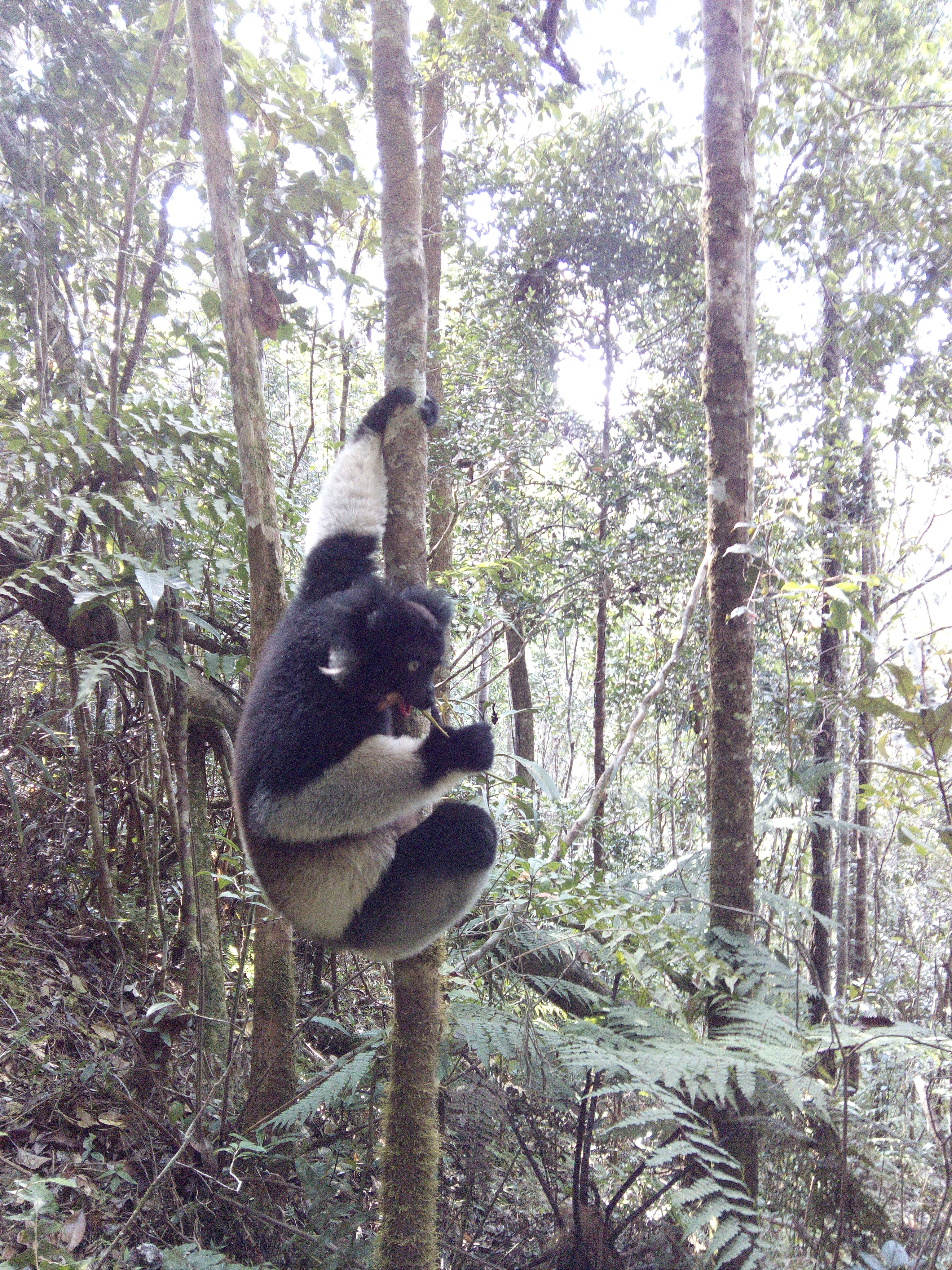
A not-so-people-shy Indri at Andasibe-Mantadia National Park. Photograph taken during my first trip in November 2013.
This morning I decided to go along with two of my assistants who were heading out to survey a couple of households a bit far from the village centre. My decision to go with these two and not the other two was based solely on the distance they were going to be walking — at least an hour and a half, rather than 15-30 minutes for the other two. Yesterday, I was sitting inside the hut most of the day staring at my computer screen so it made perfect sense to go out on a longer walk today.
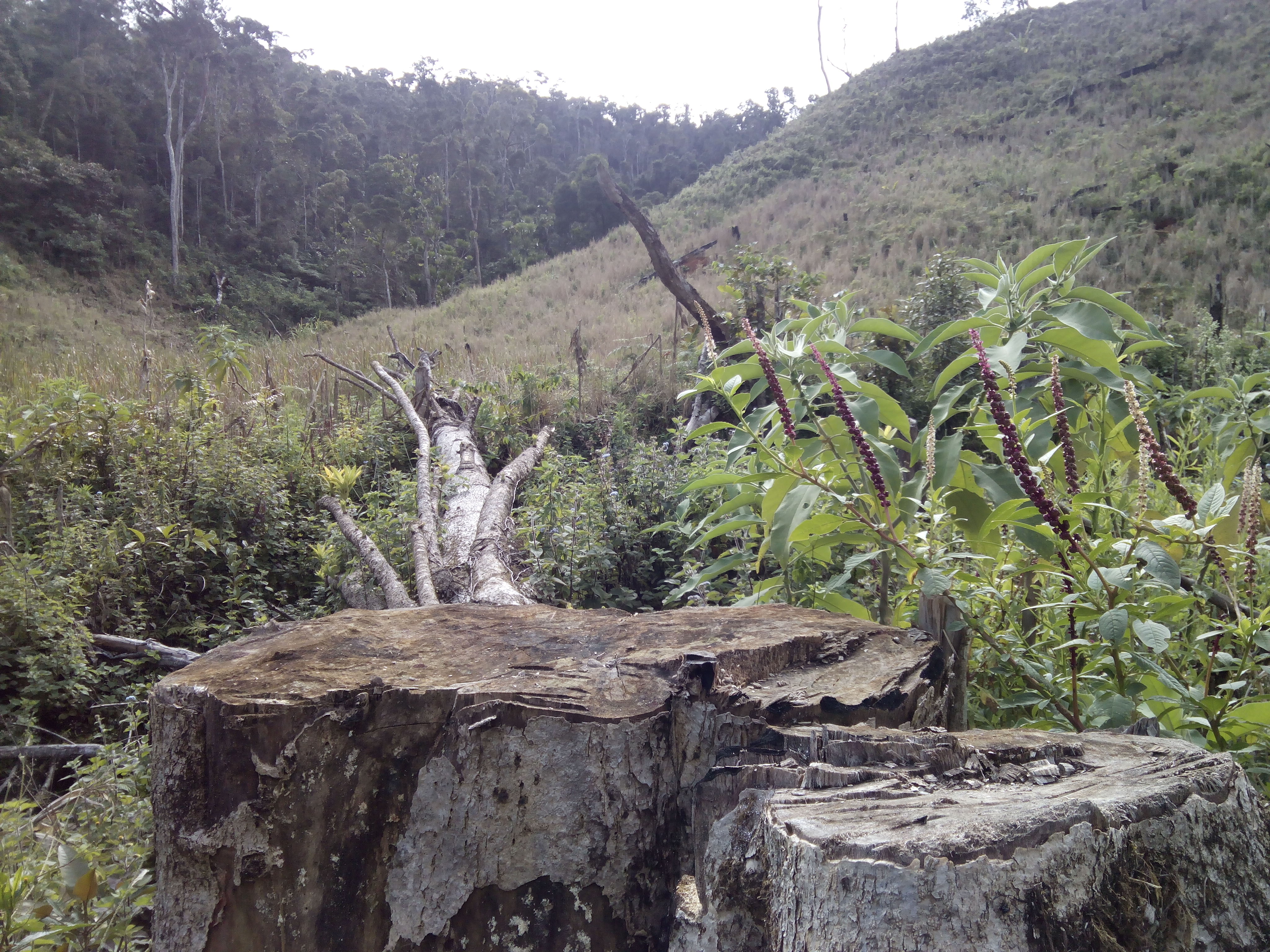
Massive tree stumps on the foreground, what remains of the forests in the background.
Halfway to our intended destination, we came across a shallow gorge full of massive trees (see images) that were either felled and left to rot or were standing but dead and dry (burnt mostly). My first thought and of my assistants was “what a waste of resource!”. This was clearly a recent primary forest clearance for hill-rice farming — Teviala (cutting and burning of the primary forest) — later confirmed by our guide that it was indeed cleared only last year. I had never before seen Teviala like this nor had the assistants, and we were just staggered to see what a Teviala really looked like. The clearance of primary forest for the sole purpose of hill-rice cultivation, without caring a bit about the massive quantity of timber that was just being left to rot. Mind you, there is no easy/cheap way to get these massive trees out of the area in any case.
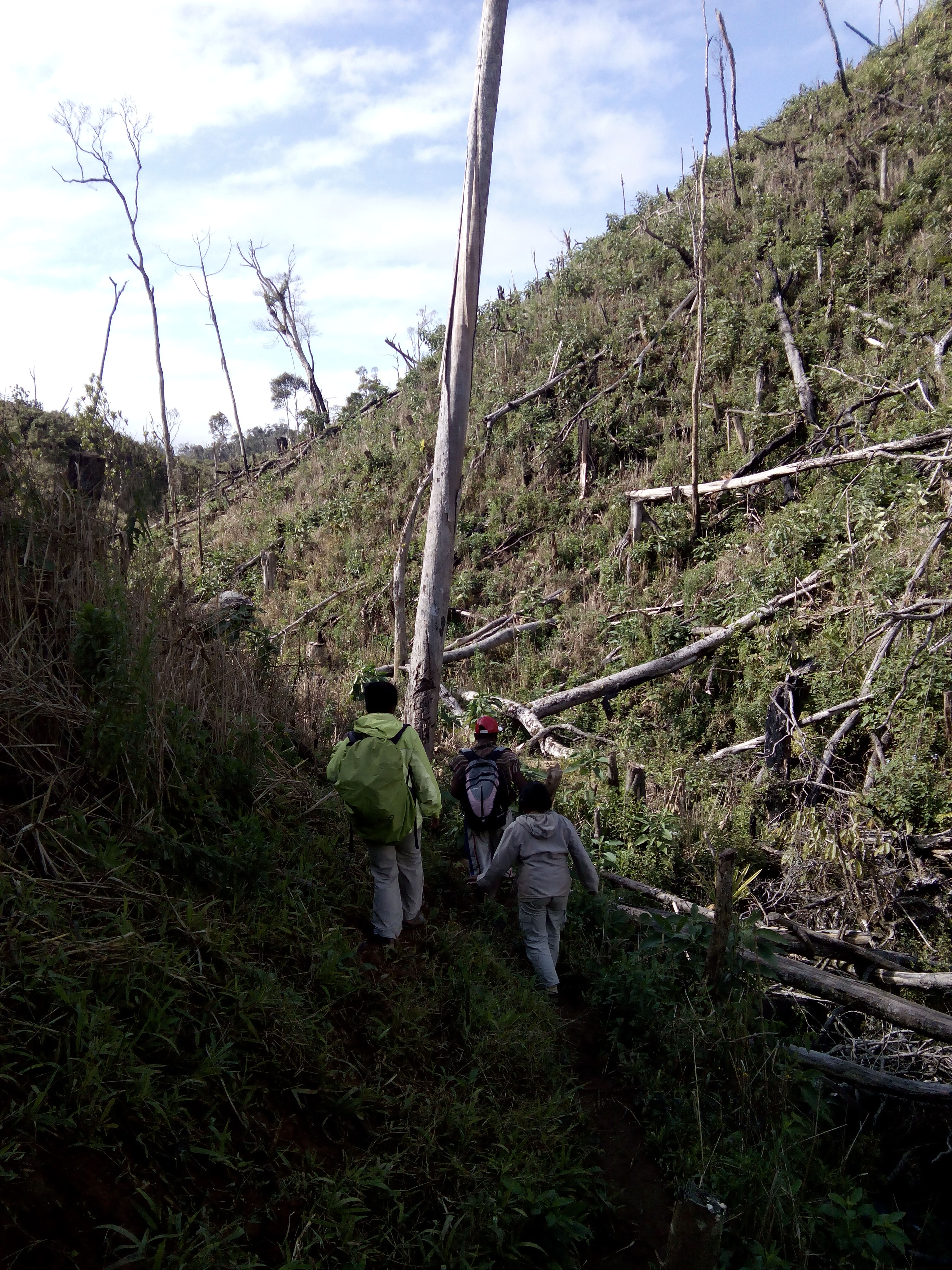
Walking through the gorge full dead trees.
In many other countries in the tropics and sub-tropics, I have seen people go to huge lengths to exploit forest for timber, and only once cleared, use the land for agriculture and other economic activity if at all. Here in many parts of the eastern rainforest of Madagascar, with the exception of the illegal exploitation of rosewood even from the difficult-to-reach areas, it is quite incredible to see a general lack of interest in timber when it comes to clearing the forest for hill-rice farming. And only here in Madagascar I think people stay poor (or sometimes get poorer) after exploiting primary forest at this scale.
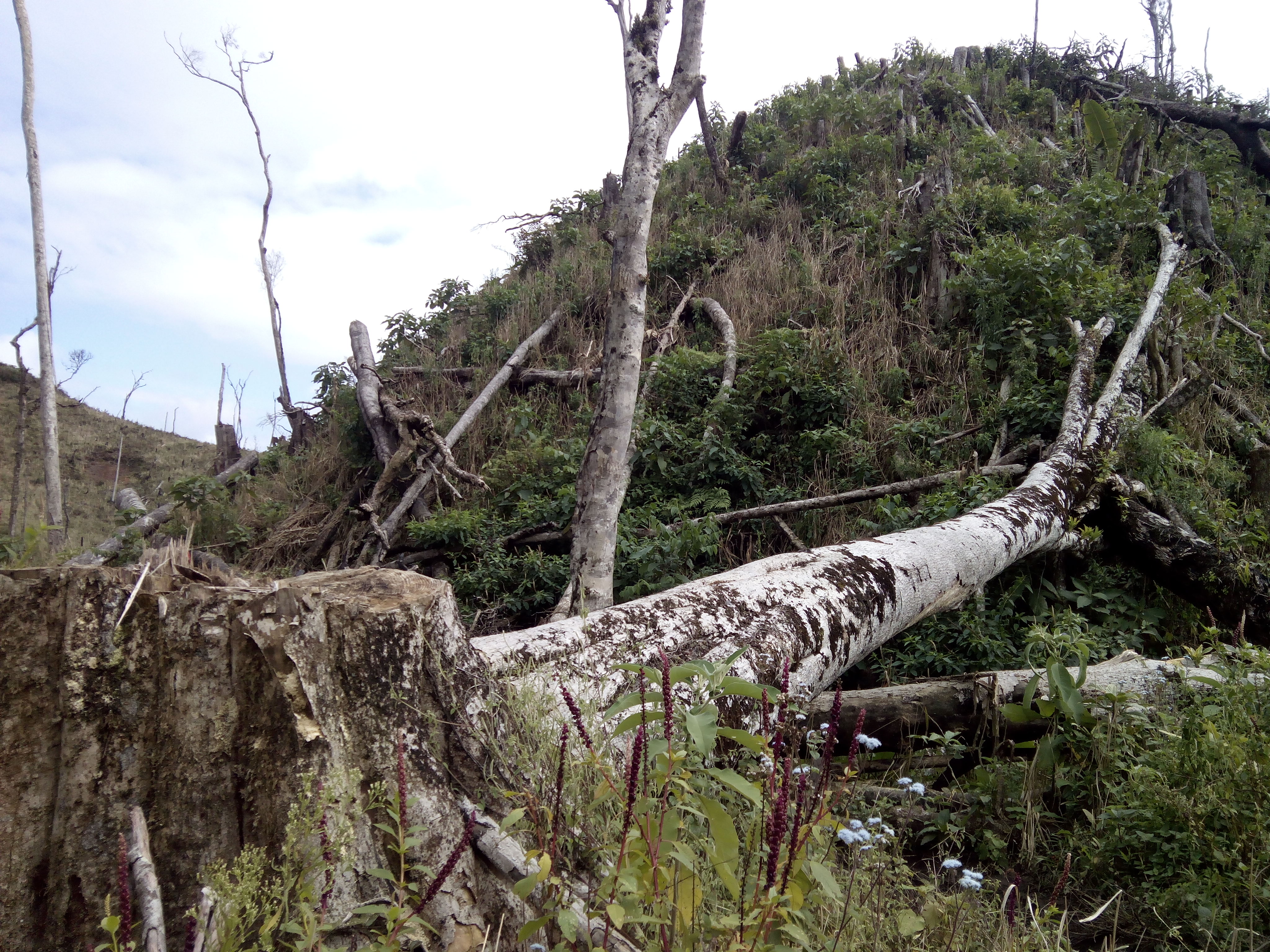
It could be a very valuable tree economically somewhere else, but not here!
The second thought that came to my mind was that of the Indris whose cries I had heard the other day. This must have been their habitat until last year, and quite a good one at that looking at the size of the trees that are lying on the ground. There is a little patch of primary forest left on the top of a nearby hill but I didn’t hear any Indri from there, they probably left the area out of fear and perhaps many of them were killed for bushmeat as well. At least some Indris, those that survived the Teviala must have moved into the nearby forest patches for now. From what I have seen today, I am not sure they’ll be able to make those remaining forest patches their home for much long either.
It’s a sad story of forest loss at a massive scale locally, particularly when we consider the landscape here and the meagre benefits that accrue to those clearing the forest. My observation thus far has been that one household farms an entire hill and is still not able to produce enough to feed the family well for more than a few months. So there are certainly no winners here, we are all at a loss.
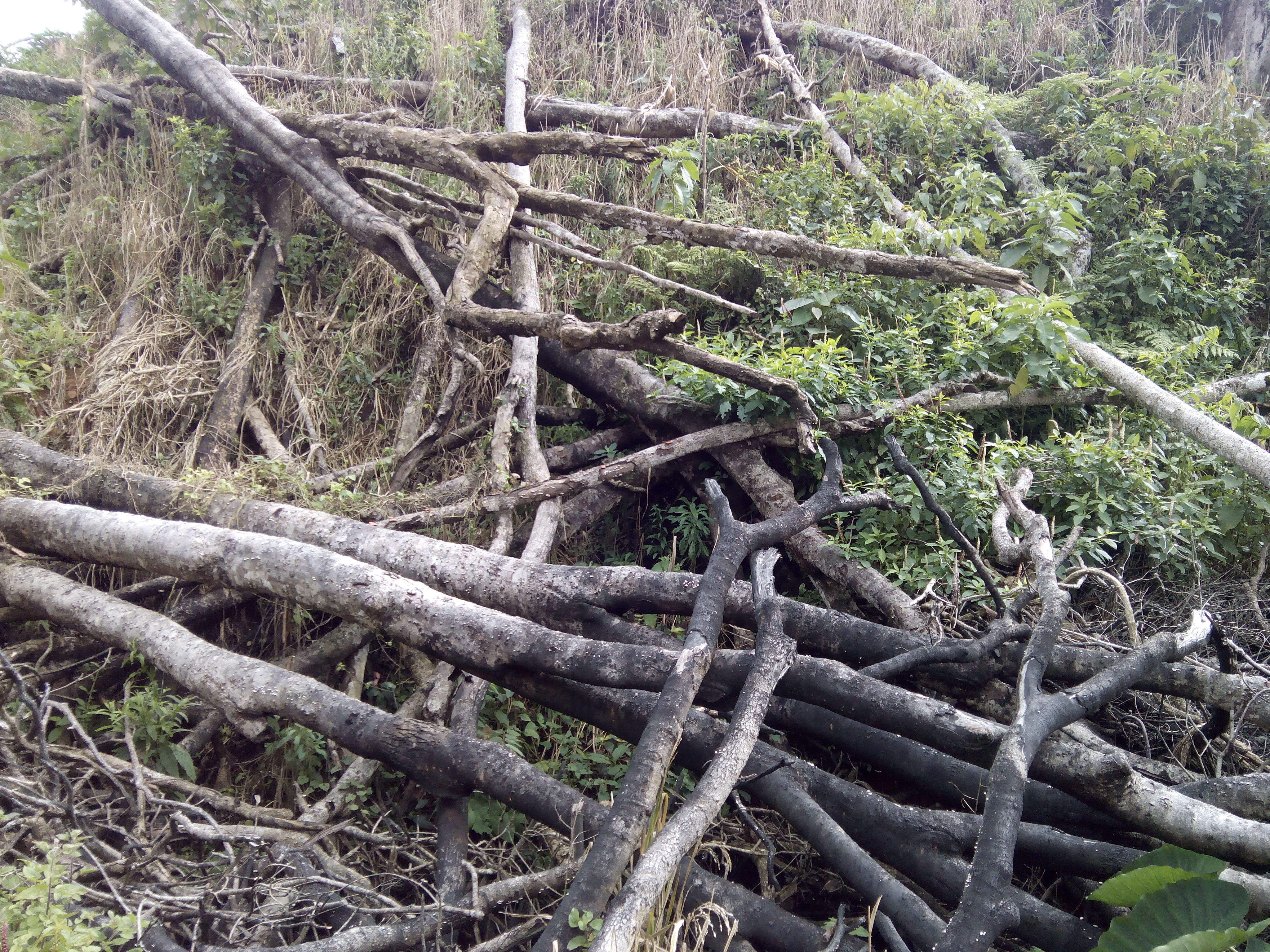
Aftermath of a teviala.
I think of the small stream I might have to venture out to again this afternoon for another bath, and I wonder whether there might have been a river in its place that originated in those woods, which now looks like an aftermath of a massive natural disaster.